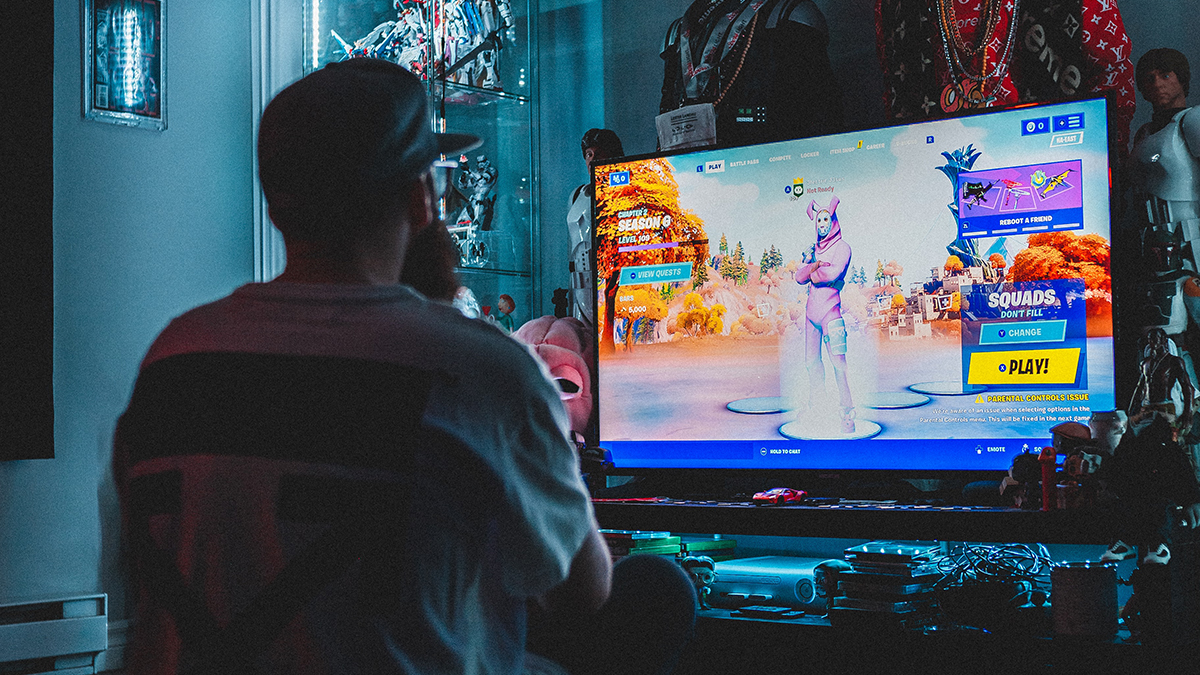The metaverse is the biological child of video games. But it’s fairly clear that this statement is more of an evolution than anything entrenched in history. Playing Daley Thompson’s Decathlon in 1984 only gave us the merest insight into the world of, perhaps, the Olympics, rather than living it ourselves. So, over the years, we have lent upon exhaustive terms created by sci-fi authors and those on the peripheries of the gamelife™.
It’s only natural that game developers want a say in how the metaverse will transform how we do literally everything because we saw the future, but you weren’t ready.
Let’s Start With: WTF Is The Metaverse?
Yikes, what a question. But it’s a simple enough answer: a persistent interoperable experience.
The persistent part actually comes from the games lexicon via Richard Bartle, who explored the possibility of a world that “continues to exist and develop internally even when there are no people interacting with it”. That means you, dear player. However, this brave new world of the metaverse is a bit more than that: it’s a space that continues to exist and develop internally even when you aren’t there. That makes it more casual, more interoperable, and more hands on. So what should game developers do to get ahead in this persistent shared experience?
Understand That The Metizen* Isn’t Ready Player One
I did a masterclass over at Pocket Gamer recently, and it concerned player behaviour. I tried to make it as all-encompassing as possible. When you approach something like the metaverse or games in 2021, you have to rely upon what you think you know in order to architect that future space that you want to create. Listen: autonomy, mastery and purpose is all you have to maintain in any product – not just the metaverse, or games, for that matter.
The mistake that a lot of developers have made with the metaverse is that they believe it is a game. And it isn’t. It is persistent, yes, it is a sometimes-shared experience; and given that it is multifaceted in this way across devices, platforms, etc, it must be distributed across demographics too.
I always try to follow the Mom Test when I create anything, from games to health tech apps. And if my mum can use it then everybody can use it. Not all newcomers to the metaverse are going to be Gen Z or Millennials who were born with devices in their hands. It is arrogant to assume that they are our only target audience. In a world where digital natives are getting older, we have to reflect experiences based on those needs. A recent study showed that stimulation of the brain through smartphone apps and games amounted to a better understanding of everything from COVID to Alzheimer’s Disease. So why are we making experiences only for kids? Also, if you’re making applications in the metaverse for young people (under 13s) how on Earth will you get paid? Subscriptions? Ugh.
It’s interesting to explore the possibilities of how the metaverse might be more universally adapted to suit everything from the champagne swilling elitists over in NFT Land, all the way to those struggling to play games on the second-, third-, fourth-hand first-generation iPhone. As game developers, it has always been our duty to ensure that everyone, regardless of who they are or what they do or do not have, has a right to play. That is a great design for life in the metaverse, isn’t it? Do that.
*Yeah, I coined a phrase.
Build A World (That Can Live Without You)
A few years ago, when I was working on a famous game franchise, I had a job role that seemed out-of-line with the Lua developers, the tool artists, and the VFX supremos. It was also out-of-line with the core tenets of the console game itself. My job was World Builder, and though the game was short-lived, what was significant about this position was that the game studio was evidently thinking about the game as being something much bigger than a platform port or a physical unit sale.
When I build worlds for huge transmedia giants or small indie experiences, I think about the big picture first, and always. Geogrify founder Kate Edwards is a bit of a superhero in this space for me, as she’s approaching world building as something more than fiction, which sings to my phygital design foci. So this might possibly be why the world building job felt like such a non-job to the rest of the team back then – agile focuses itself on the individual features that are built to make a world, not the world writ-large and all its component moving parts.
I had always thought that every game designer thinks big because what we then must do is concentrate that big picture into a miniature – a limning – so that it’s fit for purpose on console or mobile. This isn’t a problem in the metaverse because the metaverse is persistent and shared, which really encompasses the alpha-to-omega of game design. If you want to really get down to it, the metaverse is a single level design that never ends.
When that endless level has been created and the story and exposition or motivation – and even the call to adventure or action – is in place: walk away because you can’t control the content, and nor should you. That’s good design.

Party Planners
Have you ever been to one of those parties – I know I have – where you don’t know anybody, you’re not really sure what’s going on, and you’re literally there for the accidental urine-affected peanuts and the cheap booze that you stole from the puking kids on the way in? I feel like that in the metaverse sometimes, and it’s largely because the creators of the metaverse currently don’t really have any experience of working in planned environments. That is to say that although they are creating technical experiences, they might come from a marketing or a more creative background which doesn’t always give space to, say, agile development, for example.
One of the things I love about growing up in the games industry is witnessing how much we’ve changed as developers and how we try, wherever possible, to create solid timelines and roadmaps – not just for the studio but for our audience, too. Certainly, those with more of a creative edge should be celebrated for imagining and implementing incredible experiences in the blink of an eye, where some of the nerdier among us take a little bit longer to create wonder. Thinking about the metaverse as something that doesn’t end means that planning is quite difficult – the unknown is difficult to plan for! Therefore, the first few milestones of development are important to set up the room for the experience: the grey box, the spawn points, the points of interest, etc.
It’s not always conducive to creating this persistent space by going straight for the creative jugular. Try to think instead about content from the perspective of a coping mechanism to avoid people who have just entered your party heading straight for the unpronounceable booze and peanuts, and allow them to dive straight into the bucket of Moët (virgin cocktails are also available).
Plan and commit to the first time user experience (FTUE) as you would a game. But ensure that you don’t bogart the entire metaverse experience with your CEO’s edgy gaming demands, and allow the end-user to exist comfortably in what it is you have created.
So, here’s a mega tip: grab those marketers out of the boardroom and bring them into your world from day one. You can send them back to the boardroom when the experience has launched. You need to see the future to understand how you will plan it in the present. They need structure which you have in spades, and you need that blue sky nonsense that makes you feel weird because it’s intangible. Feel uncomfortable in this partnership, it will pay off, trust me.
Okey doke, that’s plenty to ponder for now. We’ll dive into Part 2 later this week.
Kelly lives and breathes everything Beyond Games as a futurist and self-described creative badass. And as an experienced game developer, she's worked on titles such as Tomb Raider, Halo 3 and Candy Crush.



































